Recent Articles
Popular Makes
Body Types
2018 Toyota C-HR Road Test and Review
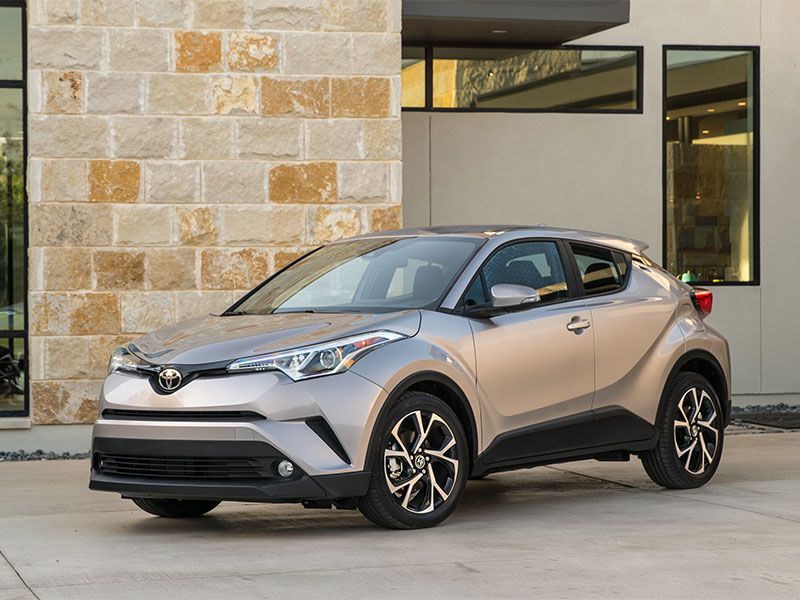
2018 Toyota C HR exterior front angle silver ・ Photo by Toyota
Completely new for the 2018 model year, Toyota has just introduced its latest offering: The 2018 C-HR. The initials, C-HR, are short for “Coupe High-Rider," right on trend to join the tiny compact crossover segment alongside the likes of the Honda HR-V, Nissan Juke, and the Mazda CX-3. It may be small in size, but it’s big on style and value. Read on to learn all about the newest vehicle to join the Toyota brand.
What’s With That Name?
“C-HR” might not necessarily roll off the tongue, and it's not exactly easy to understand what “coupe high-rider” means. But to set the record straight, the C-HR does indeed have four doors even though it's called a coupe. However, to emphasize its sportiness, the designers achieved a 2-door “coupe” look by housing the rear door handles up high, behind the rear side windows. This eliminates the traditional handles on the rear doors and makes it look less like a standard 4-door crossover. We’ve seen this general approach on other smaller crossovers - the Honda HR-V, Nissan Juke, and even the Hyundai Veloster compact hot hatch - but Toyota gives themselves a deserved pat on the back for their uniquely designed door handles in the rear.
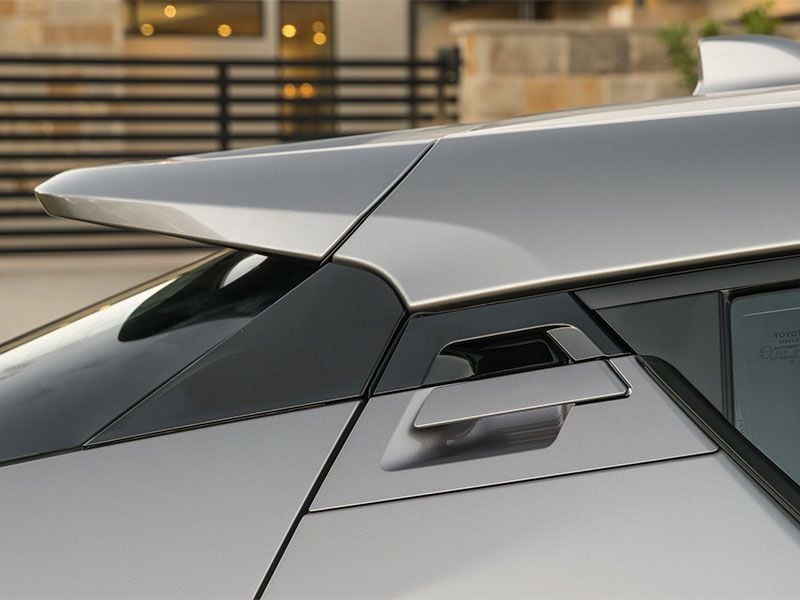
Photo by Toyota
What other vehicles was the C-HR inspired by?
At first glance, you might think this car came from outer space. But setting its looks aside, the C-HR’s chief engineer prioritized a solid, performance-based experience behind the wheel. He took to the famed Nürburgring and drove cars like the trendy Volkswagen Golf hot hatch and the sporty Audi Q3 compact crossover to set benchmarks for this new vehicle. The C-HR was never intended to be considered a sports car, but handling, performance and responsiveness were all priorities in its development.
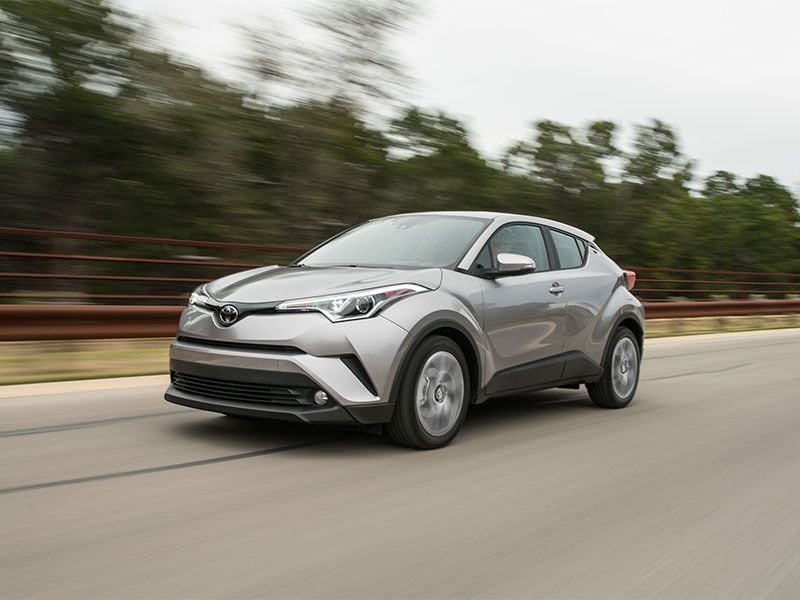
Photo by Toyota
So how does it drive?
There was a lot of anticipation (and hype) going into our test drive, but an Audi it was not. It’s a nimble little crossover that feels planted to the road and handles well, notably better than other vehicles we’ve driven with the same badge. We think it’s a better ride than the Honda HR-V, but not quite as exciting as the Mazda CX-3. This will be the second vehicle available to buyers with Toyota’s New Global Architecture (TNGA); the current Prius has it, and the 2018 Toyota Camry will be the next to follow. However, we didn’t find the C-HR as underpowered as we’d expected as we drove along winding roads and down the open highway. On the other hand, we'd gladly take more than the paltry 144hp if asked. There are three drive modes available: Eco, Standard and Sport. We did drive the C-HR in both the Standard and Sport modes, but didn’t notice a significant difference between the two. Some buyers may be disappointed to find the C-HR will not be available with all-wheel-drive, but we think this makes sense — this vehicle definitely seems better suited for the concrete jungle rather than the great outdoors, and it helps to keep the price down.
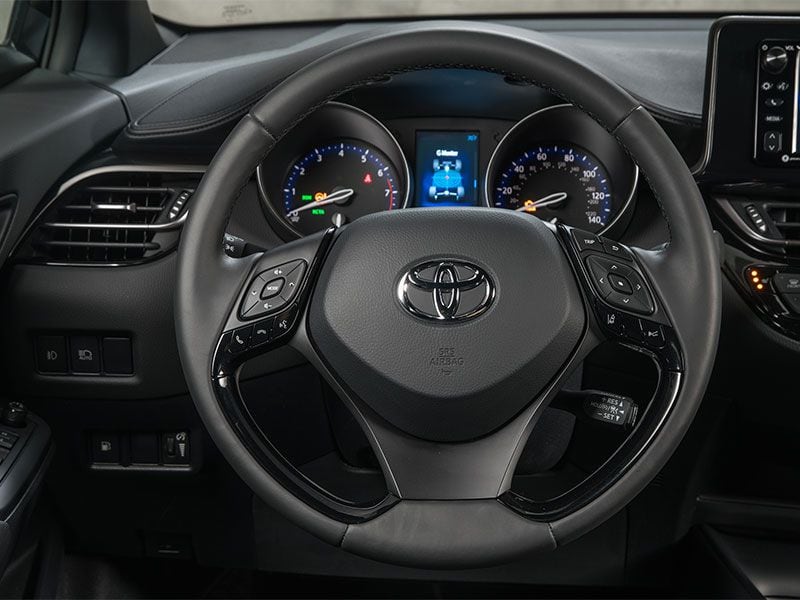
Photo by Toyota
Does it get good gas mileage?
Fuel economy estimates for the C-HR are 27 mpg in the city/31 mpg on the highway (29 mpg combined). That's not too bad — for context, the compact Toyota Corolla gets 28/36 mpg and the Toyota RAV4 gets 23/30 mpg. This puts the C-HR a little closer to a compact car than a true crossover. Buyers will benefit from a crossover that earns the fuel economy of a smaller car, but will additionally enjoy a higher seating position on the road. However, when looking at the C-HR’s closest competitors, it does fall behind. Both the Honda HR-V (28/34 mpg), and the Nissan Juke (28/33 mpg), fare better at the pump than the C-HR.
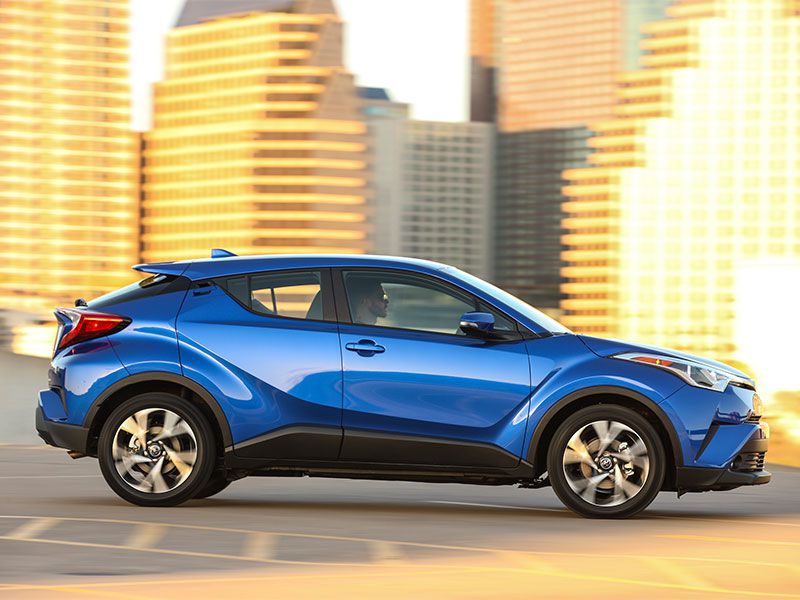
Photo by Toyota
Is that really a Toyota?
One thing is for certain – the C-HR’s appearance is quite a departure for Toyota. The bold styling is a far leap outside of the brand’s comfort zone, and we think it’s one of the best looking vehicles in its lineup in a long, long time. There’s nothing demure about its looks whatsoever; it’s bold, sporty and looks ready to pounce with its wide stance and squat profile. It looks especially distinctive from the rear with its bulging, boomerang-shaped taillights, and the standard 18-inch alloy wheels keep the C-HR looking sporty and athletic, too. Extra style points are awarded to the special R-Code package, which features a white roof and side mirrors, paired with either a teal, blue or red metallic body color for $500.
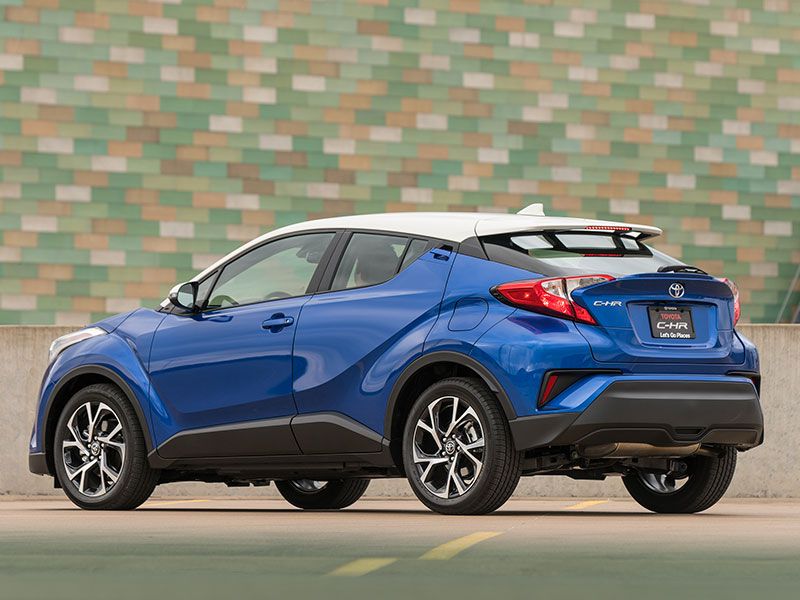
Photo by Toyota
Where's the technology?
Toyota is touting a “modern, uncluttered” interior — and we do agree that the cabin is clean, without a ton of buttons across the dash. We liked the firm bolstered seats that gave clues of sporty handling ahead, but we weren’t exactly impressed by the bare bones infotainment and audio system. At launch, the C-HR will not come equipped with Toyota’s Entune system, which features various popular apps, including navigation. The 7-inch color display is wasted on just audio controls and your phone book, and no upgraded sound system is available. We suspect this has something to do with the car being inherited from Scion initially (and possible efforts to keep the millennial-focused price point down), but we think these are glaring omissions. Also, we've come to expect youthful vehicles to include Apple CarPlay or Android Auto. Look closely and you’ll notice a diamond design motif; diamond-shaped air vents, button clusters, and even embossing in the headliner appear throughout the cabin. The interior color scheme is only offered in black, which we can understand, but find rather bland in comparison to the exciting exterior styling.
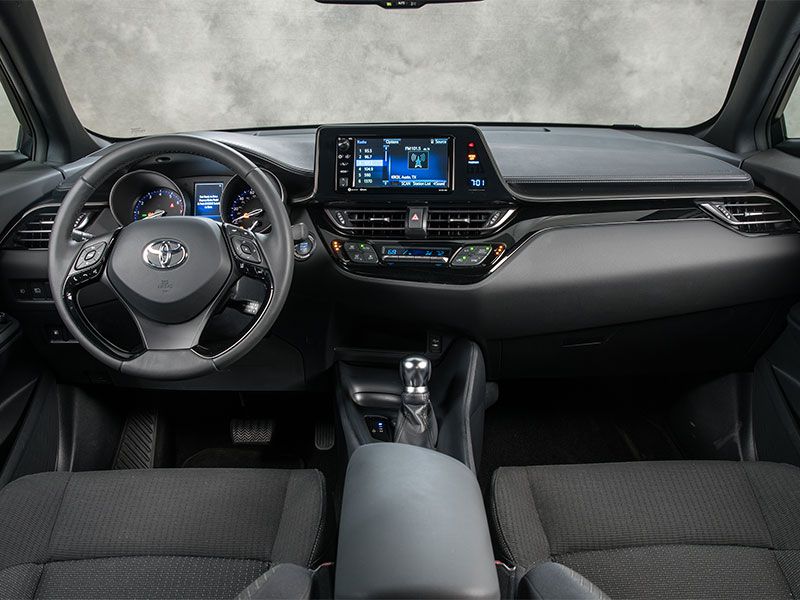
Photo by Toyota
Is this crossover for you?
Crossovers are saturating the marketplace and have been among the most sought-after vehicles by car shoppers for quite some time. However, there is a big difference between the Toyota C-HR and the better-known Toyota RAV4. We like to think of new sporty small crossovers like the C-HR as “lifted hatchbacks” — they are similar in size, but feature higher seating positions than the compact cars. That being said, adjust your expectations; if you’re in the market for a crossover because you want a roomy cabin or travel often with kids in car seats, the C-HR may not be for you. Toyota says they created the C-HR with Millennials in mind, and that’s no big surprise since the crossover was originally intended to enter the market with a Scion badge. Now that Scion is gone, Toyota stayed true to the Millennial-focused brand’s vision and says they are looking to entice these buyers to claim bragging rights to their first car purchases. Not a Millennial? Who cares! If you are looking to make a bold statement on the road, we say the C-HR is for you, too.
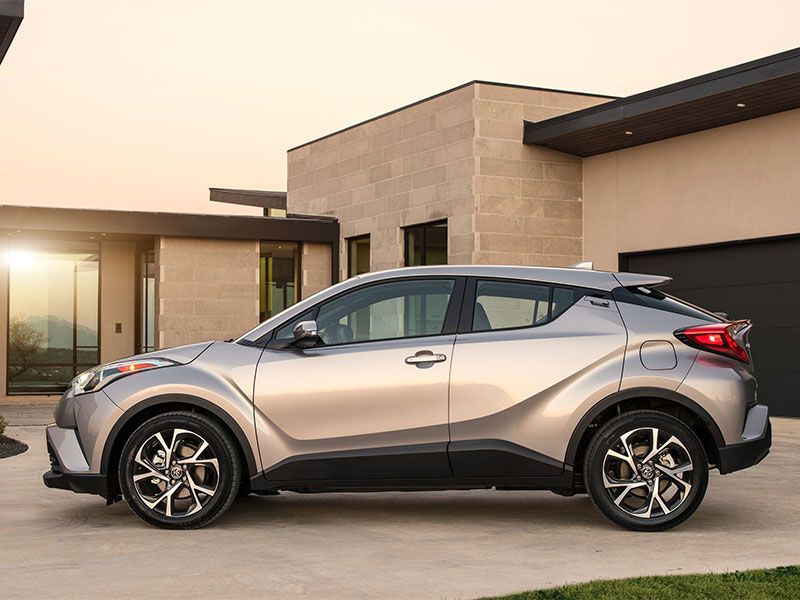
Photo by Toyota
Models and Pricing
Toyota keeps things simple when it comes to the C-HR: two models will be available, the XLE and XLE Premium. The entry-level XLE will start at $22,500 (plus destination charges) and comes standard with features like power folding/heated side mirrors, backup camera, a leather-wrapped steering wheel and dual-zone climate controls. The XLE Premium, starting at $24,350, adds blind spot monitoring, rear cross traffic alert, heated front seats and smart key with push button start. If you want to take advantage of that stylish R-Code exterior package on the XLE Premium, that’ll cost you $500 more. Most impressive is that the vehicle will also come standard with Toyota’s Safety Sense-P system. TSS-P bundles many advanced driver safety features together, like forward collision warning, automatic emergency braking, and lane departure alert with steering assist. It will also be the only vehicle in its class with standard full-speed dynamic radar cruise control, too. We think this is a whole lotta car for $24,000.
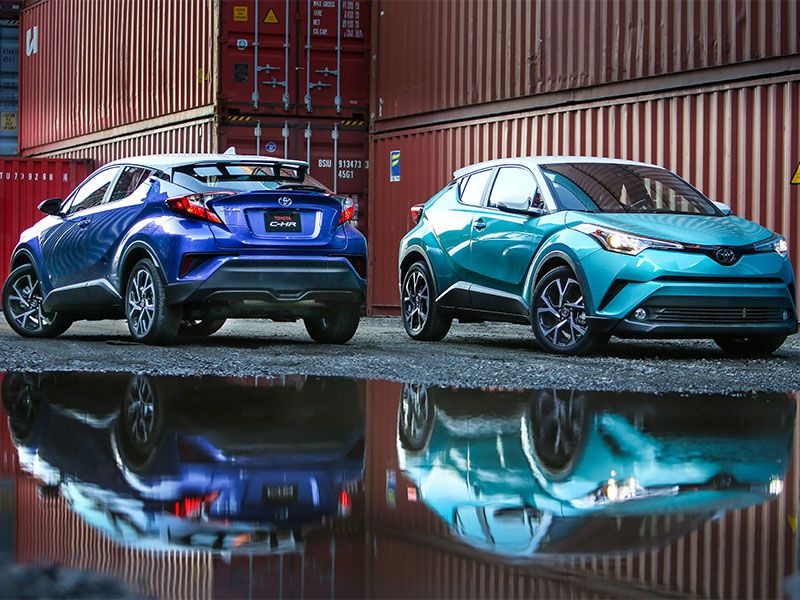
Photo by Toyota
Final Thoughts
The all-new Toyota C-HR is an exciting offering from a brand that is usually known for practicality and dependability. It was enjoyable to drive, comfortable to ride in, and seems versatile enough to suit many types of buyers. We’d recommend taking a look if you’re in the market for a compact vehicle — we’d definitely choose it over a Toyota Corolla or Corolla iM. Though you may be disappointed with the lack of more advanced infotainment options, the standard safety aids are impressive - especially the dynamic radar cruise control.
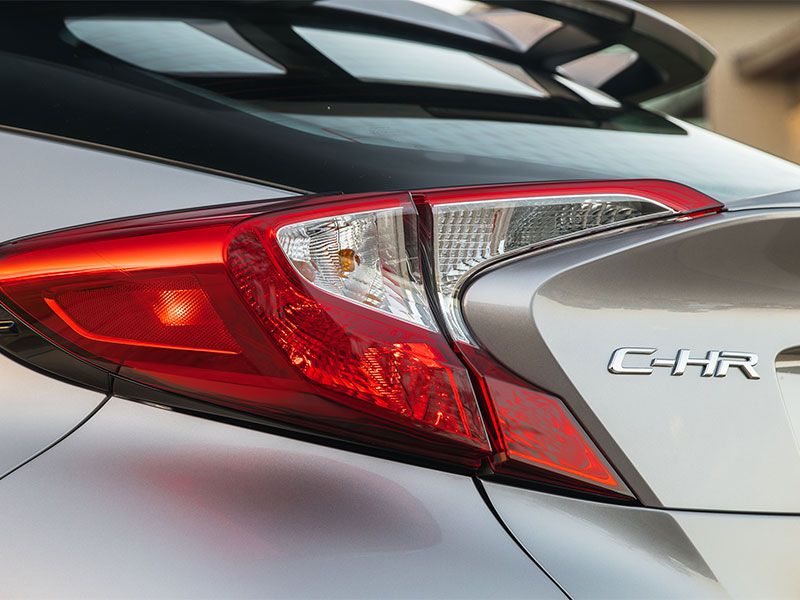
Photo by Toyota